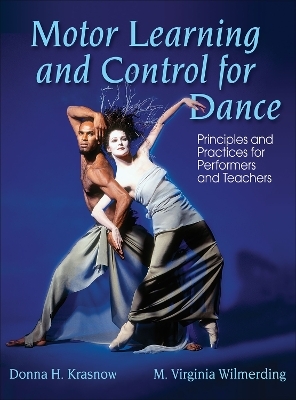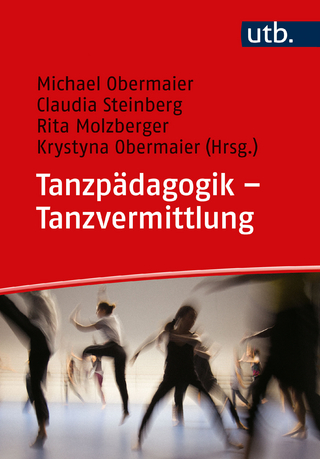
Motor Learning and Control for Dance
Human Kinetics (Verlag)
978-1-4504-5741-5 (ISBN)
In language accessible even to those with no science background, Motor Learning and Control for Dance showcases principles and practices for students, artists, and teachers. The text offers a perspective on movement education not found in traditional dance training while adding to a palette of tools and strategies for improving dance instruction and performance. Aspiring dancers and instructors will explore how to develop motor skills, how to control movement on all levels, and—most important—how motor skills are best taught and learned.
The authors, noted experts on motor learning and motor control in the dance world, explore these features that appeal to students and instructors alike:
• Dance-specific photos, examples, and figures illustrate how to solve common problems various dance genres.
• The 16 chapters prepare dance educators to teach dancers of all ages and abilities and support the development of dance artists and students in training and performance.
• An extensive bibliography of sports and dance science literature allows teachers and performers to do their own research.
• A glossary with a list of key terms at the back of the book.
Part I presents an overview of motor behavior, covering motor development from birth to early adulthood. It provides the essential information for teaching posture control and balance, the locomotor skills underlying a range of complex dance skills, and the ballistic skills that are difficult to teach and learn, such as grand battement and movements in street dance.
Part II explores motor control and how movement is planned, initiated, and executed. Readers will learn how the nervous system organizes the coordination of movement, the effects of anxiety and states of arousal on dance performance, how to integrate the senses into movement, and how speed and accuracy interact.
Part III investigates methods of motor learning for dancers of all ages. Readers will explore how to implement a variety of instructional strategies, determine the best approaches for learning dance skills, and motivate and inspire dancers. This section also discusses how various methods of practice can help or hinder dancers, strategies for improving the recall of dance skills and sequences, and how to embrace somatic practice and its contribution to understanding imagery and motor learning.
Motor Learning and Control for Dance addresses many related topics that are important to the discipline, such as imagery and improvisation. This book will help performers and teachers blend science with pedagogy to meet the challenge of artistry and technique in preparing for dance performance.
Donna Krasnow is a professor emerita in the department of dance at York University in Toronto, Canada, and is a member of the special faculty at California Institute of the Arts in the United States. She specializes in dance science research, concentrating on dance kinesiology, injury prevention and care, conditioning for dancers, and motor learning and motor control, with a special emphasis on the young dancer. Donna has published numerous articles in the Journal of Dance Medicine & Science and Medical Problems of Performing Artists, as well as resource papers in collaboration with M. Virginia Wilmerding for the International Association for Dance Medicine & Science (IADMS). She was the conference director for IADMS from 2004 to 2008 as well as serving on the board of directors. Donna is currently the associate editor for dance for Medical Problems of Performing Artists. She conducts workshops for dance faculty in alignment and healthy practices for dancers, including the Teachers Day Seminars at York University, and is a nine-time resident guest artist at Victorian College of the Arts and VCA Secondary School, University of Melbourne, Australia. Donna has created a specialized body conditioning system for dancers called C-I Training (conditioning with imagery). She has produced a DVD series of this work, and in 2010 she coauthored the book Conditioning With Imagery for Dancers with professional dancer Jordana Deveau. She offers courses for teachers in Limón technique pedagogy and C-I Training. Information can be found at www.citraining.com. M. Virginia (“Ginny”) Wilmerding danced professionally in New York City in her early professional career, and is now a research professor at the University of New Mexico in Albuquerque, New Mexico, United States, where she teaches for both the exercise science and dance programs. Courses include kinesiology, research design, exercise physiology, exercise prescription, exercise and disease prevention, and conditioning. She also teaches at the Public Academy for Performing Arts, a charter school. Ginny is currently the chief executive officer (CEO) of the International Association for Dance Medicine & Science (IADMS) and the chair of the IADMS Annual Meeting Program Committee. She is past president of IADMS and served on the IADMS board of directors from 2001 to 2011. Ginny serves as associate editor for science for the Journal of Dance Medicine & Science. She has published original research in Journal of Dance Medicine & Science, Medical Problems of Performing Artists, Medicine & Science in Sports & Exercise, Journal of Strength and Conditioning Research, and IDEA Today. She has also coauthored resource papers for IADMS with Donna Krasnow. Research interests include body composition, training methodologies, injury incidence and prevention, pedagogical considerations in technique class, and the physiological requirements of various dance idioms.
Chapter 1. Foundations of Motor Behavior
Part I. Motor Development
Chapter 2. Theories of Motor Development
Chapter 3. Development of Postural Control and Balance
Chapter 4. Development of Locomotor Skills
Chapter 5. Development of Ballistic Skills
Part II. Motor Control
Chapter 6. Organization of Motor Control
Chapter 7. Attention and Performance
Chapter 8. Motor Control and the Sensory Systems
Chapter 9. Motor Control and Central Organization
Chapter 10. Speed, Accuracy, and Coordination
Part III. Motor Learning
Chapter 11. Theories and Concepts of Motor Learning
Chapter 12. Instructional Strategies
Chapter 13. Motivation
Chapter 14. Conditions of Practice
Chapter 15. Retention and Transfer
Chapter 16. Mental Practice and Imagery
| Verlagsort | Champaign, IL |
|---|---|
| Sprache | englisch |
| Maße | 216 x 279 mm |
| Gewicht | 1157 g |
| Themenwelt | Kunst / Musik / Theater ► Theater / Ballett |
| Sachbuch/Ratgeber ► Sport ► Tanzen / Tanzsport | |
| ISBN-10 | 1-4504-5741-X / 145045741X |
| ISBN-13 | 978-1-4504-5741-5 / 9781450457415 |
| Zustand | Neuware |
| Haben Sie eine Frage zum Produkt? |
aus dem Bereich


